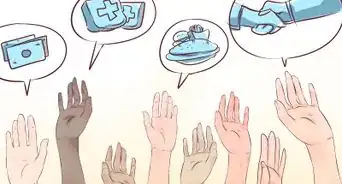X
This article was co-authored by wikiHow Staff. Our trained team of editors and researchers validate articles for accuracy and comprehensiveness. wikiHow's Content Management Team carefully monitors the work from our editorial staff to ensure that each article is backed by trusted research and meets our high quality standards.
There are 7 references cited in this article, which can be found at the bottom of the page.
This article has been viewed 22,844 times.
Learn more...
Does it ever feel like everybody in the world loves hugs except for you? There are actually plenty of people who are uncomfortable being hugged, but if you want to learn to enjoy it, our guide may help!
Steps
Method 1
Method 1 of 3:
Practicing Hugging
-
1Ask for help. Is there one person you feel comfortable hugging, like a close friend or a family member? Find somebody who will not make you feel weird that you don’t like to hug, and maybe suggest ways to make your hug feel more natural.
- For example, you could ask a friend to grade you, or rate you on your hug. You can make a game out of it and make it easier for your friend to give you a bad, but honest assessment. Hearing from your friend that your hug is a D-plus or a 3 is easier to swallow than “That was a terrible hug, yuck.”
- Ask how you can improve. They may give you some useful feedback like, “Don’t be so stiff,” or “Come closer, because you feel really far away.”
-
2Practice relaxation techniques. Hugs are bad for both people if one person is rigid. Find some strategies to help yourself stay relaxed.
- Take a deep breath and exhale.[1]
- Get the tension out of your arms by consciously tensing them up, holding the tension for a few seconds, and then relaxing. Your arms will feel more relaxed. You can try this technique with your whole body as well.[2]
- Don’t put pressure on yourself to “get it right.” It’s just a hug! If you are hugging someone, it’s presumably because you care about them. Chances are they care about you, too, and won’t judge you on how you do it.
Advertisement -
3Hug your pillow. Yes, it sounds a little strange. But no one needs to know you are doing it. Pretend the pillow is a person and practice relaxing into the pillow. Figure out where your arms and head feel most comfortable.
-
4Work up to it. Don’t jump right into big bear hugs if you are not a touchy-feely person. Take small steps toward your goal of a full hug, by breaking the action down into smaller steps. Once you are comfortable with the small action, move on to the next, bigger action. For example, you might progress this way:
- Shaking hands
- Touching other person’s upper arm
- Putting your arm around them (AKA the side hug)
- Putting one arm around their shoulders while facing them
- Full hug
-
5Discover some benefits to hugging. Hugging may not feel very natural or comfortable to you, but there are lots of reasons to give and receive hugs. They do more than just show affection. For example, hugs:
- Reduce stress.[3] Hugs trigger your brain to produce oxytocin, which helps you feel relaxed and thus, less stressed. [4]
- Keep you healthy. Stress taxes your immune system. If you are receiving hugs, you are reducing your stress level. Because you are feeling less stressed, you are less likely to get sick. [5]
- Help you feel connected to others. Oxytocin is known as “the bonding hormone,” which is the same hormone triggered in new mothers following the birth of a baby. Hugs help you feel that others are supporting you and reduce the feeling of loneliness, itself a stressor.[6]
Advertisement
Method 2
Method 2 of 3:
Accepting a Hug
-
1Have welcoming body language. In order for you to accept a hug, someone needs to want to give you one. You will not get a hug if you look uncomfortable or unfriendly.
- Face the person who wants to hug you and smile.
- Hold your arms out at your sides, ready to receive a hug. Don’t cross your arms or keep them straight at your sides.
-
2Accept a hug with confidence. Are you ready to embrace a hug with open arms (pun intended)? Here are some things to keep in mind when you are hugging someone:
- When hugging, try to tilt your head in the opposite direction to the person. If they turn their head to the left, go right. Otherwise you'll end up bumping heads, and that's super awkward.
- When you put your arms around them, try not to stick your elbows out awkwardly. It feels more natural to the person being hugged to have your elbows closer toward them.
- A hug doesn't have to be long. A few seconds is completely appropriate.
-
3Focus on the things you like about the hug. Does it make you feel warm or relaxed? Did it make you smile? Remember those feelings for the next time you hug someone. This will help you associate positive feelings with being hugged.
-
4Signal the end of the hug. If you are just getting comfortable with hugs, you may not want to be hugged for that long. Here are some body language cues that you could try to indicate you are finished hugging:
- Giving the person a quick, tighter squeeze, then backing out of the hug.
- Stepping back and briefly putting your hands on the person’s upper arms as you back out.
- Transition to a sideways hug and pull away.
Advertisement
Method 3
Method 3 of 3:
Accepting Your Personal Preferences
-
1Figure out some alternatives to hugging. If you’re not comfortable with hugs, there are other ways you may feel more comfortable expressing warmth, friendliness, or comfort. Consider shaking hands, patting someone on the back, or putting an arm around them instead.
-
2Give others social cues. If you don’t like hugging, make sure you let people know. You can tell the truth and say, for example, “I’m sorry, I’ve never liked being hugged,” or you can try another strategy:
- When you see someone approaching with their arms out, offer your hand to shake instead. Most of the time, people will pick up on this nonverbal cue.
- Put your hand up in front of you (like you’re telling someone to wait) and say, “You might not want to hug me, I’m just getting over a terrible cold.”
- Make a joke out of it. “I’m the world’s worst hugger, you don’t want to hug me!” and pull back.
- Just get hugged for a second and pull away quickly.
-
3Go easy on yourself. There's no rule in this world that you have to give and enjoy hugs. It's a personal preference, and you shouldn't force yourself to learn to enjoy them just to fit in. Just as some people don’t like being in big crowds or in small spaces, you simply have a different comfort level than others.
-
4Decide if it is a bigger problem. If you have a genuine fear of being touched by someone else, you may have haphephobia.[7] You may wish to seek counseling to help you get over your phobia.
Advertisement
Community Q&A
-
QuestionWhy don’t I like being touched?
 Community AnswerThere could be many reasons, including personal preference. It's okay to not want to be touched or hugged. I think you should just tell your friends that you aren't comfortable with hugs or being touched.
Community AnswerThere could be many reasons, including personal preference. It's okay to not want to be touched or hugged. I think you should just tell your friends that you aren't comfortable with hugs or being touched.
Advertisement
References
- ↑ http://www.health.harvard.edu/mind-and-mood/relaxation-techniques-breath-control-helps-quell-errant-stress-response
- ↑ https://www.anxietybc.com/sites/default/files/MuscleRelaxation.pdf
- ↑ http://www.npr.org/templates/story/story.php?storyId=128795325
- ↑ http://health.usnews.com/health-news/health-wellness/articles/2016-02-03/the-health-benefits-of-hugging
- ↑ https://www.scientificamerican.com/article/a-hug-a-day-keeps-the-doctor-away/
- ↑ https://www.dignityhealth.org/articles/4-facts-about-hugs-why-you-should-embrace-the-embrace
- ↑ https://my.clevelandclinic.org/health/diseases/21964-haphephobia-fear-of-being-touched
About This Article
Advertisement


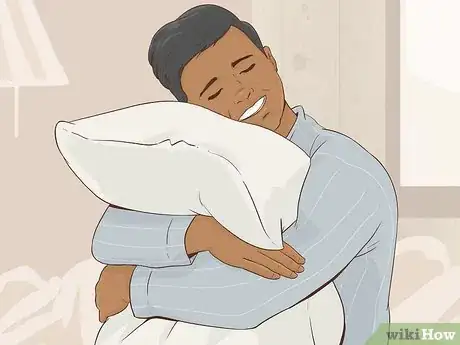
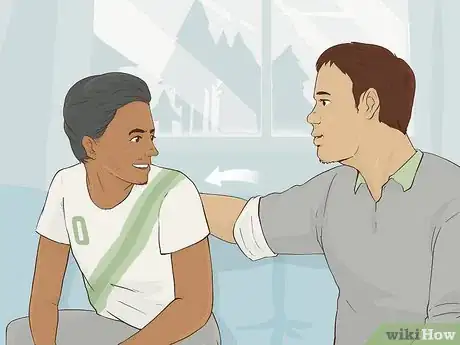
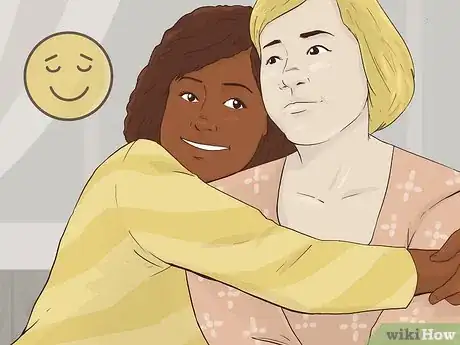

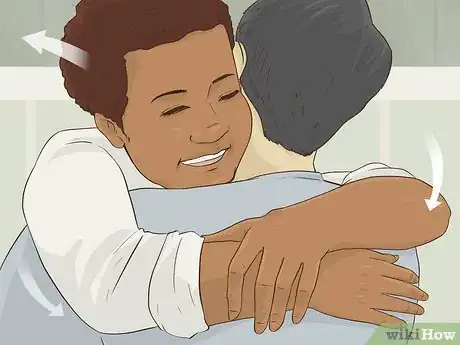

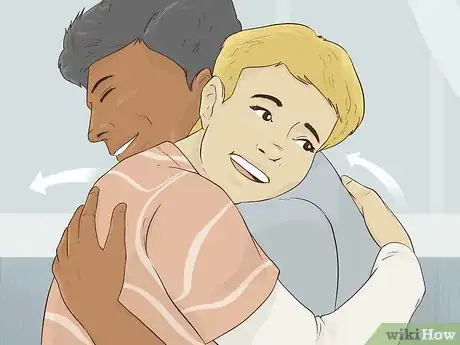
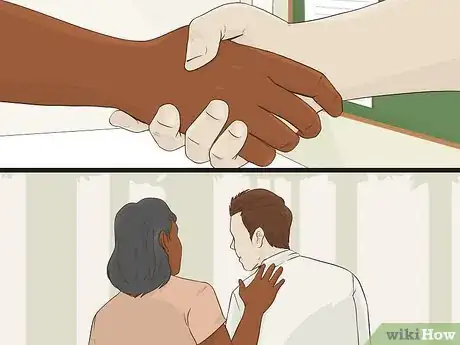
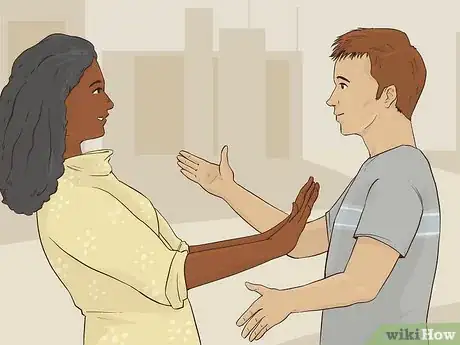






-Step-15-Version-2.webp)





